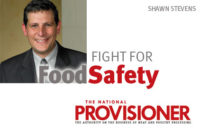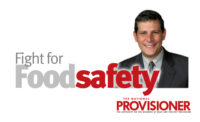Only a few years ago, we would have been hard pressed to see more than a few weeks go by without reading about another large-scale E. coli O157:H7 (“E. coli”) outbreak or recall in the news.
Indeed, as many will remember, 2007 was described by many as the “Year of the Recall.” In 2007, there were a total of 22 recalls of beef products involving nearly 35 million pounds. The beef industry, the scientific community and governmental regulators were all struggling during this period to better understand and also control E. coli in the slaughter and fabrication environment.
Although government and industry began directing more resources toward containing the E. coli problem, the disturbing trends persisted into the following year. Although the numbers of recalls declined slightly in 2008, there were still 17 recalls for E. coli involving nearly 10 million pounds. Although 2009 saw some additional improvement, with only 16 recalls involving 1.5 million pounds, nearly one-third of the recalls in 2009 were announced because the beef products at issue were putting people in the hospital.
In 2010 and 2011, greater resources were dedicated toward solving the E. coli problem.
In addition to a series of policies announced by FSIS designed to better control pathogens in raw beef products, consumer groups successfully petitioned FSIS to treat non-O157:H7 STECs as adulterants in ground beef, which reinvigorated the development of more advanced interventions and improved testing methodologies. With increased awareness, and better and more rapid testing methods, more E. coli was being found and diverted before it could enter commerce. The numbers continued to decrease, with less than 1.5 million pounds of beef products being recalled in 2010 and 2011 combined. In 2010, two of the recalls were associated with human illness, and in 2011, only one recall was associated with human illness.
The continued response from government and industry culminated in drastic reductions of E. coli in 2012. During the entire year, there were only four recalls involving only 25,000 pounds of beef. Amazingly, none of those recalls were associated with any human illness.
Congratulations are owed to industry.
Although we are deep into the 2013 fall “E. coli season,” even this year is showing great results. So far, there have only been five recalls involving beef (and veal) totaling only 90,000 pounds. It is important to note, however, that three of these recalls (for a total of 75,000 pounds) were initiated by a single company. The fourth recall involved a company that had tested and found 12,000 pounds of its products to be positive for E. coli, but had inadvertently shipped it (before discovering the problem).
Without those two unfortunate irregularities, 2013 would be an almost E. coli-free year.
These trends are not happening by chance. Industry is winning the E. coli fight, and this proves that industry’s efforts have not been in vain. But, with that said, industry can never become complacent.
Although the beef industry may be chasing E. coli deeper into the shadows, let there be no mistake: If you let down your guard, even for just a moment, E. coli (like an evil villain) can and will come racing back.





Report Abusive Comment